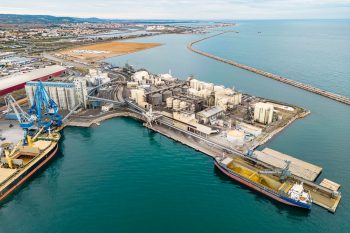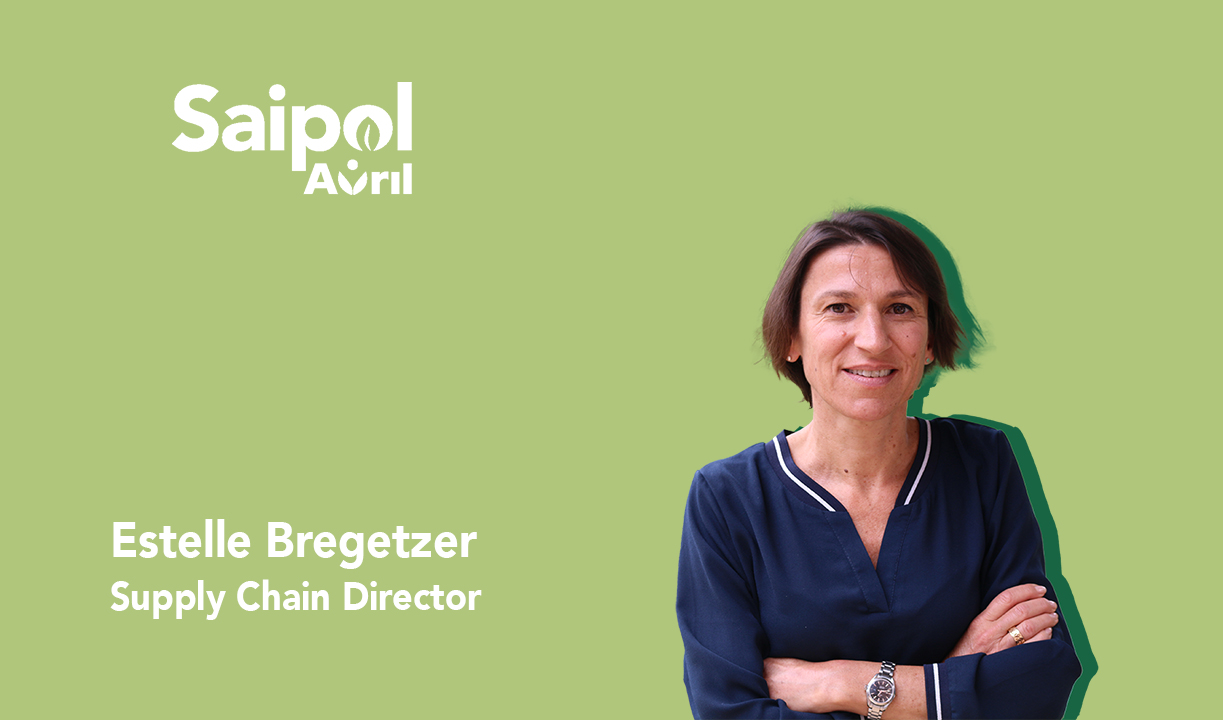ARVALIS, Terres Inovia and Saipol brought together farmers, institutions and other agricultural professionals on 12 March for a technical conference entitled “Camelina Day: meeting the technical challenges from upstream to downstream”, part of the European CARINA and 4CE-MED projects.
During the conference, which was held at the ARVALIS experimental farm in Boigneville, our partners shared their latest technical recommendations for growing camelina and Brassica carinata as intercrops, which will be used to develop sustainable aviation fuels.
– AN EXPERIMENTAL PROGRAMME SUPPORTED BY CARINA AND 4CE-MED
These two European projects, CARINA and 4CE-MED, study cropping systems that use new sustainable resources for energy while limiting competition for land use.

The CARINA project, supported by the European Union, aims to diversify cropping systems by growing two oilseed crops, Brassica carinata and camelina. The diversification strategies studied for these two short-cycle crops are designed to reduce competition for land use. We are working on how to intercrop camelina and Brassica carinata, either in combination or on marginal land, with other professionals in the field. The goal is to develop sustainable cropping systems that take into account different integration methods and their associated techniques. These products are being developed as part of a circular economy so that by-products can be used as biocontrol substances. By strategically combining these crops, the CARINA project aims to boost yield stability, improve farmers’ incomes and promote the overall sustainability of farming systems. This initiative also contributes to the growth and development of the bioeconomy sector. In order to facilitate deploying innovative systems, CARINA will also address the certification of low environmental impact raw materials for the biobased industry.

The 4CE-MED project, supported by PRIMA, began studying camelina in double cropping systems in the Mediterranean area. This project is also an opportunity to work on integrating this crop with professionals in the field,
focusing on sustainability and co-design, particularly for conservation agriculture systems.
At the technical conference, the Terres Inovia and Arvalis agricultural technical institutes shared the results of their latest studies on camelina. They highlighted the different ways in which camelina can be integrated into cropping systems and provided technical recommendations adapted to different production methods, noting issues to watch out for and requirements for success. These institutes will also have to explore new questions as part of their research on camelina, such as pre-mowing to move up the harvest, sowing methods and managing straw from the previous crop, feasibility zones for the crop depending on the soil and climate, etc. It should be noted that there are still major challenges ahead for catch crops: stabilising yields for camelina grown as a summer catch crop in uncertain weather conditions and harvesting camelina early enough to plant a crop afterwards for camelina grown as a winter catch crop, for example.
The technical institutes also provided technical specifications depending on the schedule, summer catch crop or winter catch crop.
– TECHNICAL INSTITUTES READY TO ASSIST WITH INTERCROPPING IN THE FIELD
As a summer intercrop, also known as a summer catch crop, camelina has been studied in a vast network of plots farmed by Terres Inovia, Saipol and several cooperatives. Winter peas and barley are the two main predecessors for sowing before 10 July, with fewer technical constraints after peas. Planting methods after grains must be very specific, preferably by direct seeding with tines. Fertilising with 10 to 40 units, depending on the previous crop, will improve crop establishment. The catch crop should be sown right after the harvest. Organising the operation so that harvesting and sowing can take place at the same time is a major challenge. Despite camelina’s drought tolerance, production potential depends on summer rainfall, particularly at emergence: from 0.5 to 1.5 t/ha. It is harvested at the end of September and beginning of October.
This same camelina can be sown in autumn just before the grain sowing season (1 to 20 October from north to south), to be harvested in May before a main summer crop is planted (sorghum, sunflower, soya, buckwheat, corn) slightly late. The harvest date is an essential condition for success in this order; the choice of feed crop and associated strains is also decisive. Pre-mowing is a technique that is being studied and could be an interesting option (For more information: Impact of mowing and swathing on the winter camelina harvest – ARVALIS.fr (youtube.com)). This also reduces nitrogen fertilisation requirements (40 to 60 kg N/ha).
The key points of each production method are being studied: water supply for summer intercropping and the success of main crops after camelina in winter intercropping. Techniques such as relay cropping are also being developed to deal with these constraints.
– GRADUAL ROLL-OUT FROM 2024, WITH AN INDUSTRIAL USE PROPOSED BY SAIPOL
Saipol, an industrial partner in the Carina project working with distributers, presented the results of previous years’ trials and outlined its goals for 2024. Saipol is launching the oilseed intercrop market in France by offering an attractive price for intercropped camelina seeds from 2024 in order to support the growing use of oilseed intercrops to meet future needs for sustainable aviation fuels. Farmers will receive an incentivised price for camelina seeds and “harvest insurance” if they meet the requirements, through partner collecting bodies. Saipol is preparing the field for a surge in volumes from the next harvest with this opportunity for farmers and collecting bodies (see press release).
Saipol plans to process up to 2,000 tonnes of French intercrop seeds in 2024, then multiply these volumes by 5 for the 2025 harvest, taking the European lead in processing intercrops for sustainable aviation fuels, while ensuring that value is shared.
– OTHER AREAS UNDER STUDY
The conference on 12 March was also an opportunity to look at other production methods for low-carbon markets: crops grown in combination or as the main crop after other intermediate crops for biogas, for example. We will hold this conference annually to share our advances, in addition to visiting trials in progress.
For more information
- CARINA project: https://www.carina-project.eu/about/
- 4CE-MED project: https://www.4cemed.eu/
- The camelina cultivation guide, published by Terres Inovia, can be downloaded online (only in French): https://www.terresinovia.fr/p/cameline-guide-de-culture
- Saipol press release: https://www.saipol.com/en/news/saipol-to-buy-camelina-for-intercropping-in-2024-with-the-support-of-collecting-bodies//


